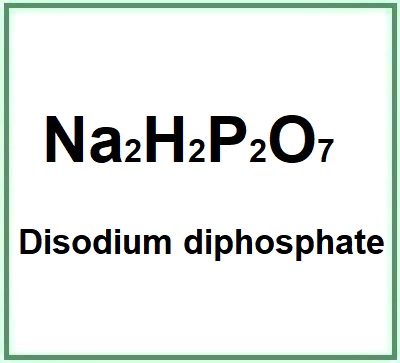![]() E450
E450
Rating : 5.5
| Evaluation | N. Experts | Evaluation | N. Experts |
|---|---|---|---|
| 1 | 6 | ||
| 2 | 7 | ||
| 3 | 8 | ||
| 4 | 9 | ||
| 5 | 10 |
Pros:
Antioxidant (1)Cons:
To be taken in controlled quantity (1)8 pts from FRanier
| Sign up to vote this object, vote his reviews and to contribute to Tiiips.Evaluate | Where is this found? |
| "Disodium Diphosphate studies" about E450 Review Consensus 8 by FRanier (9971 pt) | 2021-Oct-05 10:36 |
| Read the full Tiiip | (Send your comment) |
Compendium of the most significant studies with reference to properties, intake, effects.
Adkin DA, Davis SS, Sparrow RA, Huckle PD, Phillips AJ, Wilding IR. The effects of pharmaceutical excipients on small intestinal transit. Br J Clin Pharmacol. 1995 Apr;39(4):381-7. doi: 10.1111/j.1365-2125.1995.tb04466.x.
Vidal A, Sanchis V, Ramos AJ, Marín S. Stability of DON and DON-3-glucoside during baking as affected by the presence of food additives. Food Addit Contam Part A Chem Anal Control Expo Risk Assess. 2018 Mar;35(3):529-537. doi: 10.1080/19440049.2017.1401741.
Abd-Elhakim YM, Anwar A, Hashem MM, Moustafa GG, Abo-El-Sooud K. Sodium Acetate, Sodium Acid Pyrophosphate, and Citric Acid Impacts on Isolated Peripheral Lymphocyte Viability, Proliferation, and DNA Damage. J Biochem Mol Toxicol. 2018 Aug;32(8):e22171. doi: 10.1002/jbt.22171.
Sickler ML, Claus JR, Marriott NG, Eigel WN, Wang H. Antioxidative effects of encapsulated sodium tripolyphosphate and encapsulated sodium acid pyrophosphate in ground beef patties cooked immediately after antioxidant incorporation and stored. Meat Sci. 2013 Jul;94(3):285-8. doi: 10.1016/j.meatsci.2013.03.011.
Barth AP, Tormena CF, Viotto WH. pH influences hydrolysis of sodium polyphosphate in dairy matrices and the structure of processed cheese. J Dairy Sci. 2017 Nov;100(11):8735-8743. doi: 10.3168/jds.2017-12764.
Abd-Elhakim YM, Hashem MM, Anwar A, El-Metwally AE, Abo-El-Sooud K, Moustafa GG, Mouneir SM, Ali HA. Effects of the food additives sodium acid pyrophosphate, sodium acetate, and citric acid on hemato-immunological pathological biomarkers in rats: Relation to PPAR-α, PPAR-γ and tnfα signaling pathway. Environ Toxicol Pharmacol. 2018 Sep;62:98-106. doi: 10.1016/j.etap.2018.07.002.
Hwang CA, Beuchat LR. Efficacy of Selected Chemicals for Killing Pathogenic and Spoilage Microorganisms on Chicken Skin. J Food Prot. 1995 Jan;58(1):19-23. doi: 10.4315/0362-028X-58.1.19.
Marsh SK, Myers DJ, Stahr HM. Effects of Phosphate Solutions on Aflatoxin Production in a Synthetic Medium and in Frankfurters †. J Food Prot. 1996 Jun;59(6):626-630. doi: 10.4315/0362-028X-59.6.626.
Velázquez LD, Escudero ME, de Guzmán AM. Antibacterial effects of different food-related phosphates using Aeromonas hydrophila. J Food Prot. 2001 Feb;64(2):195-200. doi: 10.4315/0362-028x-64.2.195.
Rattanasatheirn N, Benjakul S, Visessanguan W, Kijroongrojana K. Properties, translucence, and microstructure of Pacific white shrimp treated with mixed phosphates as affected by freshness and deveining. J Food Sci. 2008 Jan;73(1):S31-40. doi: 10.1111/j.1750-3841.2007.00603.x.
| Sign up to vote this object, vote his reviews and to contribute to Tiiips.EvaluateClose | (0 comments) |
| "Descrizione" about E450 Review Consensus 8 by FRanier (9971 pt) | 2023-Jul-13 09:59 |
| Read the full Tiiip | (Send your comment) |
E450 (Disodium diphosphate) is a chemical compound, anhydrous solid,a linear polymer made up of phosphate units connected to each other by sharing oxygen atoms.
The name describes the structure of the molecule:
- 'Di-' is a prefix meaning 'two'. In this case, it refers to the two sodium (Na) atoms in the compound.
- "Sodium" is a chemical element with the symbol Na (from the Latin "natrium").
- The term 'diphosphate' refers to the pyrophosphate anion (P2O74-), which consists of two phosphate groups (PO4) linked by a phosphoanhydride bond.
The synthesis process takes place in different steps:
- Sodium carbonate reacts with phosphoric acid to produce monosodium phosphate, carbon dioxide and water. This is an acid-base reaction in which sodium carbonate (the base) reacts with phosphoric acid (the acid) to produce a salt (monosodium phosphate), water and carbon dioxide.
- When heated, monosodium phosphate undergoes a dehydration reaction, i.e. it loses water. This reaction produces disodium diphosphate. In this reaction, two molecules of monosodium phosphate come together, lose one molecule of water and form a single molecule of disodium diphosphate.
It occurs as a fine or granular, white powder.
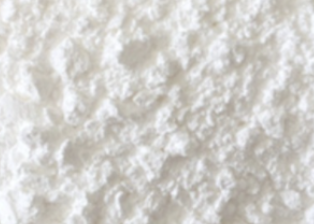
It is also called sodium pyrophosphate or sodium acid pyrophosphate, SAPP, etc.and it is composed of sodium, potassium, calcium and phosphates.
What it is used for and where
Food
Ingredient on the European food additives list as E450, emulsifier, raising agent.
The E450 are subdivided into:
- E450(i) Disodium diphosphate
- E450 (ii) Trisodium di phosphate
- E450 (iii) Tetra sodium pyrophosphate
- E450 (v) Tetra potassium pyrophosphate
- E450 (vi) Calcium di hydrogen di phosphate
Used as a leavening agent, sequestering agent, buffering agent, it can be used in tinned food, meat, ham, baking powder and so on.
Cosmetics
- Anticorrosive. Ingredient that prevents and/or inhibits corrosion of packaging material.
- Buffering agent. It is an iingredient that can bring an alkaline or acid solution to a certain pH level and prevent it from changing, in practice a pH stabiliser that can effectively resist instability and pH change.
- Chelating agent. It has the function of preventing unstable reactions and improving the bioavailability of chemical components within a product, and removes calcium and magnesium cations that can cause cloudiness in clear liquids.
Safety
Two studies were conducted in healthy volunteers to confirm the involvement of an excipient, SAPP (sodium acid pyrophosphate), and the mechanism of interaction, altered gastrointestinal transit. Gastrointestinal transit times, determined by scintigraphic imaging, were compared between treatments. Gastric emptying time was unchanged, but small intestinal transit time was decreased to 56% in the presence of SAPP (1).
It is considered a safe component for human health "when they are used at levels that are now underway or it is reasonable to expect in the future" writes the FDA (US Food & Drug Administration) (2) and these levels provide a maximum daily intake of 70 mg / kg of body weight (3).
The effects of two pH levels (5.55 or 5.85) in combination with 0.4% sodium acid pyrophosphate (SAPP), NaH2PO4 X H2O, Na2HPO4 X 7H2O, or NaCl on the growth and toxicity of Clostridium botulinum 52A were studied. Results suggest that the actual production or function of the protease responsible for toxin activation may have been inhibited by the presence of SAPP (4).
Phosphate incorporation into ground beef prior to cooking aids in the reduction of oxidation in the cooked, stored product, although a longer period of time before thermal processing may be necessary for the encapsulated phosphate to have significant benefits (5).
Sodium polyphosphate is a linear polymer formed from phosphate units linked together by sharing oxygen atoms. Addition of calcium to a solution of sodium polyphosphate results in phase separation and formation of a polyphosphate coacervate best described as a polymeric rich viscoelastic material. Polyphosphate coacervate is an interesting candidate as a biomaterial based on its ability to bind with different cations and to be loaded with drugs. Here, in vitro degradation and hemostatic properties of polyphosphate coacervates are comprehensively evaluated. We show that polyphosphate coacervates degrade and dissolve at a fast rate, losing half of their original mass in a week and transforming to mainly pyrophosphate after 4weeks. This burst dissolution phase happens earlier for the coacervate prepared from very short chain polyphosphate but overall using longer polyphosphate chains does not increase the coacervate longevity significantly. Substitution of Ca with Sr or Ba does not affect the hydrolysis of coacervates but slows down their dissolution into the media. In a whole blood clotting assay, coacervates profoundly decrease the clotting time especially when very long chain polyphosphates are used. While coacervate chain length and divalent cation type were found to significantly affect prothrombin time and thromboplastin time compared to the control, no discernible trends were observed. Platelets adhere in large numbers to coacervates, especially those containing long chain polyphosphate, but the cell morphology observed suggests that they might not to be fully activated. Overall, the long chain polyphosphate coacervate holds a great potential as a resorbable hemostatic agent. Divalent cation additions to a sodium polyphosphate solution result in polyphosphate coacervates, or highly viscous gel-like materials, having great potential in bio-applications such as drug delivery and hemostasis. As these coacervates degrade in aqueous environments, we undertook a comprehensive evaluation to better understand the impact of polyphosphate chain length and divalent cation substitution on this hydrolytic response in order to better predict degradation behavior in the body. Furthermore, there is great interest in the role of polyphosphates in hemostasis following recent publications showing that platelets secrete polyphosphates upon thrombin stimulation. In this paper, we evaluate the hemostatic potential of polyphosphate coacervates as bulk constructs, demonstrating that indeed these materials hold great potential as a degradable hemostatic agent (6).
It is an antibacterial agent that has been shown to significantly reduce Escherichia coli, coliforms, and aerobic plate count (APC) on postchill broilers and increased shelflife by 1-2 days when stored at 4.4°C (7).
Typical optimal characteristics of a Disodium diphosphate commercial product
| Appearance | White powder |
| Contenuto Na2H2P2O7 ≥% | 94.72 |
| Anidride fosforica P2O5 ≥% | 61.0 |
| pH di soluzione acquosa all'1% | 3.87 |
| Acqua insolubile % | 0.08 |
| Metalli pesanti ≤% | 0.0008 |
| As ≤% | 0.0001 |
| F ≤% | 0.0007 |
| Pb ≤% | 0.0002 |
| 80mesh ≥% | 96 |
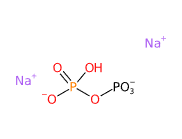 | 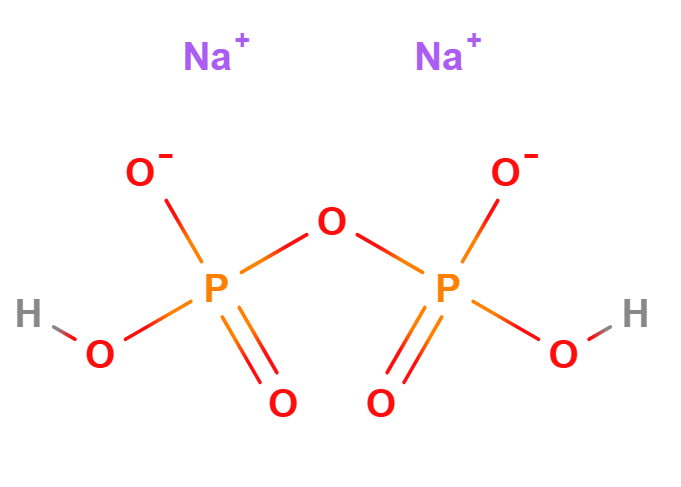 |
 | 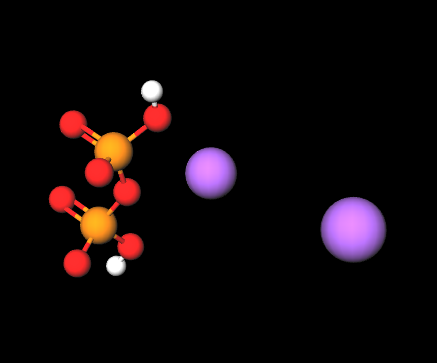 |
- Molecular Formula: Na2H2P2O7 H2Na2O7P2
- Linear Formula Na2H2P2O7
- Molecular Weight: 221.936 g/mol
- CAS: 7758-16-9
- UNII: H5WVD9LZUD
- EC Number: 231-835-0 272-808-3
Synonyms:
Sodium pyrophosphate dibasic
- Disodium dihydrogen pyrophosphate
- Sodium acid pyrophosphate
- Sodium polyphosphate
- Diphosphoric Acid Disodium Salt
- Diphosphoric acid, sodium salt (1:2)
- disodium [hydroxy(oxido)phosphoryl] hydrogen phosphate
- Polyphosphoric acids, sodium salts
- Pyrophosphoric acid, disodium salt
- Dinatriumpyrophosphat
- Sodium polyphosphates
- Grahamsches salz
- Natrium polyphosphat
- Glassy sodium phosphate
- Natrium polymetaphosphat
- disodium pyrophosphate 2-
- Sodium diphosphate dibasic
- Sodium dihydrogen pyrophosphate
- Sodium polyphosphate, amorphous
- sodium dihydrogendiphosphate
- Disodium pytophosphate
- Diphosphoric acid, disodium salt
- Disodium acid pyrophosphate
- Dinatriumpyrophosphat [German]
- Disodium dihydrogen diphosphate
Disodium dihydrogenpyrophosphate
References__________________________________________________________________
(1) Koch KM, Parr AF, Tomlinson JJ, Sandefer EP, Digenis GA, Donn KH, Powell JR Effect of sodium acid pyrophosphate on ranitidine bioavailability and gastrointestinal transit time. - Pharm Res. 1993 Jul
(2) http://www.fda.gov GRAS Substance : 182.1087
(3) Wageningen University, Food-info, E450
(4) Wagner MK, Busta FF. Inhibition of Clostridium botulinum 52A toxicity and protease activity by sodium acid pyrophosphate in media systems. Appl Environ Microbiol. 1985 Jul;50(1):16-20.
(5) Sickler ML, Claus JR, Marriott NG, Eigel WN, Wang H. Antioxidative effects of encapsulated sodium tripolyphosphate and encapsulated sodium acid pyrophosphate in ground beef patties cooked immediately after antioxidant incorporation and stored. Sickler ML, Claus JR, Marriott NG, Eigel WN, Wang H. Meat Sci. 2013 Jul;94(3):285-8. doi: 10.1016/j.meatsci.2013.03.011. Epub 2013 Mar 16.
(6) Momeni A, Filiaggi MJ Degradation and hemostatic properties of polyphosphate coacervates. Acta Biomater. 2016 Sep 1;41:328-41. doi: 10.1016/j.actbio.2016.06.002. Epub 2016 Jun 2
| Sign up to vote this object, vote his reviews and to contribute to Tiiips.EvaluateClose | (0 comments) |
Read other Tiiips about this object in __Italiano (2)
Component type: Natural Main substances: Last update: 2023-04-14 18:29:12 | Chemical Risk: |


